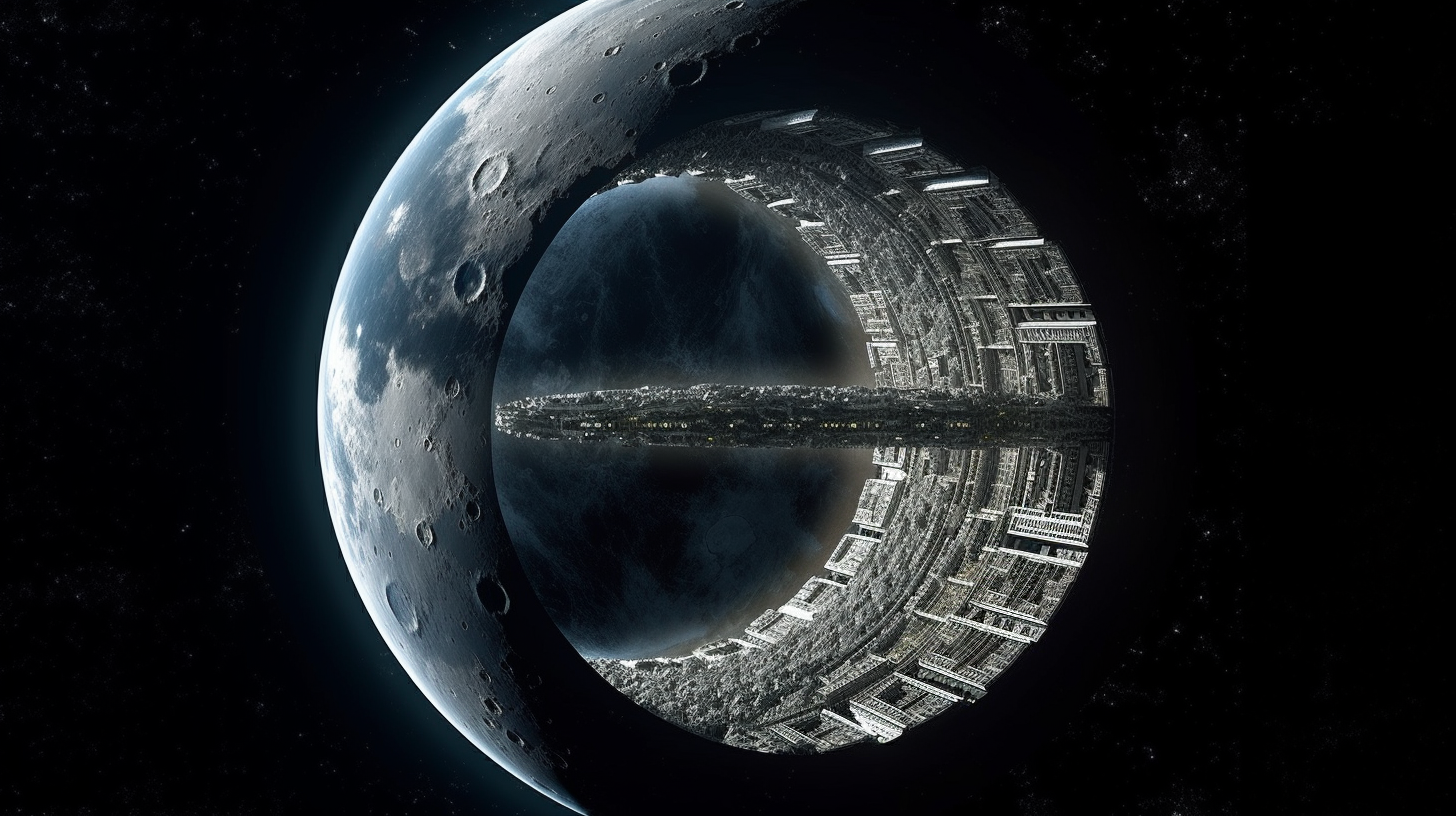Exploring the Lunar Mystery in Depth
Across history, humanity has been entranced by the moon, its enigmatic history and prominent presence in the night sky sparking a myriad of speculations and hypotheses. One of the intriguing concepts that have captivated both ancient astronaut theorists and inquisitive minds is the idea of a hollow moon. This piece delves into the intriguing claims put forth in the episode “The Hollow Moon” from Season 11 of the History Channel’s “Ancient Aliens,” delving deep into the evidence and uncertainties surrounding this controversial notion that challenges traditional lunar science.
A Tapestry of Impact Craters: The Moon’s Diverse Terrain
The moon’s exterior narrates a tale of a turbulent past, adorned with numerous impact craters of varying sizes. Scientists attribute these lunar marks to the absence of an atmosphere that could shield it from celestial objects. Unlike Earth, the moon lacks erosive forces like wind and water that could gradually erase these cosmic battle scars. Yet, it is not just the abundance of craters that puzzles researchers, but also the consistent depth of these indentations.

Findings from “Ancient Aliens” propose that lunar craters, irrespective of their dimensions, showcase strikingly uniform depths. This uniformity challenges conventional geophysics, where variations in crater depth are typically expected based on factors such as the size of the impacting object and the composition of the surface. This anomaly prompts questions about the hidden layers beneath the moon’s exterior.
The Mysterious Lunar Shield Theory
Ancient astronaut theorists present a theory to elucidate the uniform depth of lunar craters – the existence of a sturdy shield beneath the moon’s rocky surface. They posit that this shield could take the form of a dense rock or a metallic sphere, preventing craters from penetrating deep into the lunar crust.
However, a compelling query emerges from this fascinating notion: why hasn’t mainstream science embraced it? Proponents argue that the implications of such a revelation hinder its acceptance. Acknowledging a metallic or dense layer beneath the moon’s surface could signify a surprising disclosure: the moon may harbor hollowness.
The Echoing Resonance of the Lunar Bell
An intriguing piece of evidence emerges from the Apollo missions. During the Apollo 12 mission on November 20th, 1969, astronauts deliberately crashed a launch vehicle into the moon, leading to a remarkable outcome – the moon reverberated like a colossal bell, a phenomenon captured by seismographs for over an hour.
Subsequently, during the Apollo 13 mission, a heavier section of the rocket was also directed towards the moon, causing it to resonate for more than three hours, reaching depths exceeding 20 miles. This unexpected seismic resonance continues to bewilder experts and deviates from their initial forecasts.
The Hypothetical Scenario of a Hollow Moon
The moon is predominantly composed of lightweight basaltic rocks. While these rocks can absorb impacts efficiently, they should not produce such pronounced seismic reverberations. This peculiar reaction of the moon’s surface has led some to postulate that the moon’s interior might be hollow or contain voids and empty spaces.
Immerse Yourself in the Video:
Concluding Remarks on the Lunar Enigma
The concept of a hollow moon challenges our grasp of planetary physics and beckons for further investigation. While mainstream science maintains a cautious perspective, the compelling evidence presented by ancient astronaut theorists cannot be easily dismissed. As humanity ventures further into the unexplored territories of the cosmos, mysteries like the perplexing nature of the moon stand as reminders of the vast uncharted realm awaiting beyond our earthly confines. Hollow or not, the moon remains a symbol of the enduring allure of space exploration and the boundless prospects for discovery beyond our native planet.
